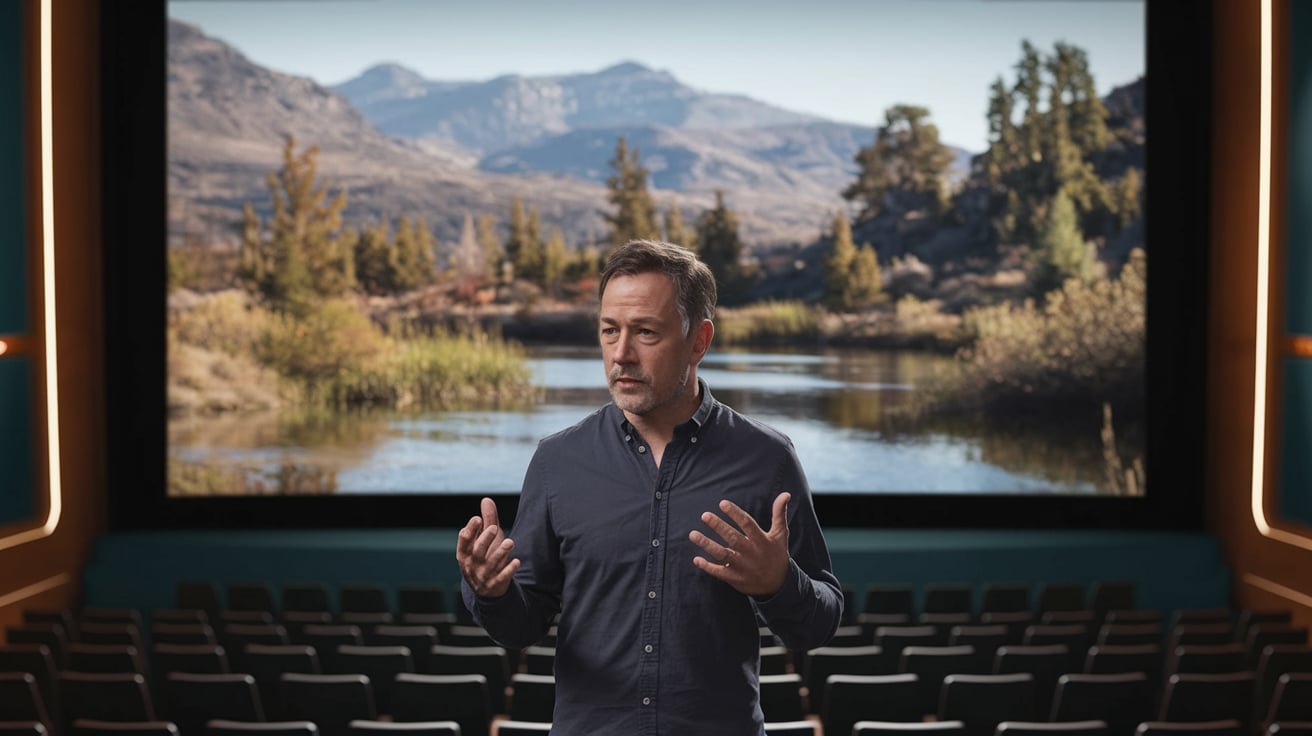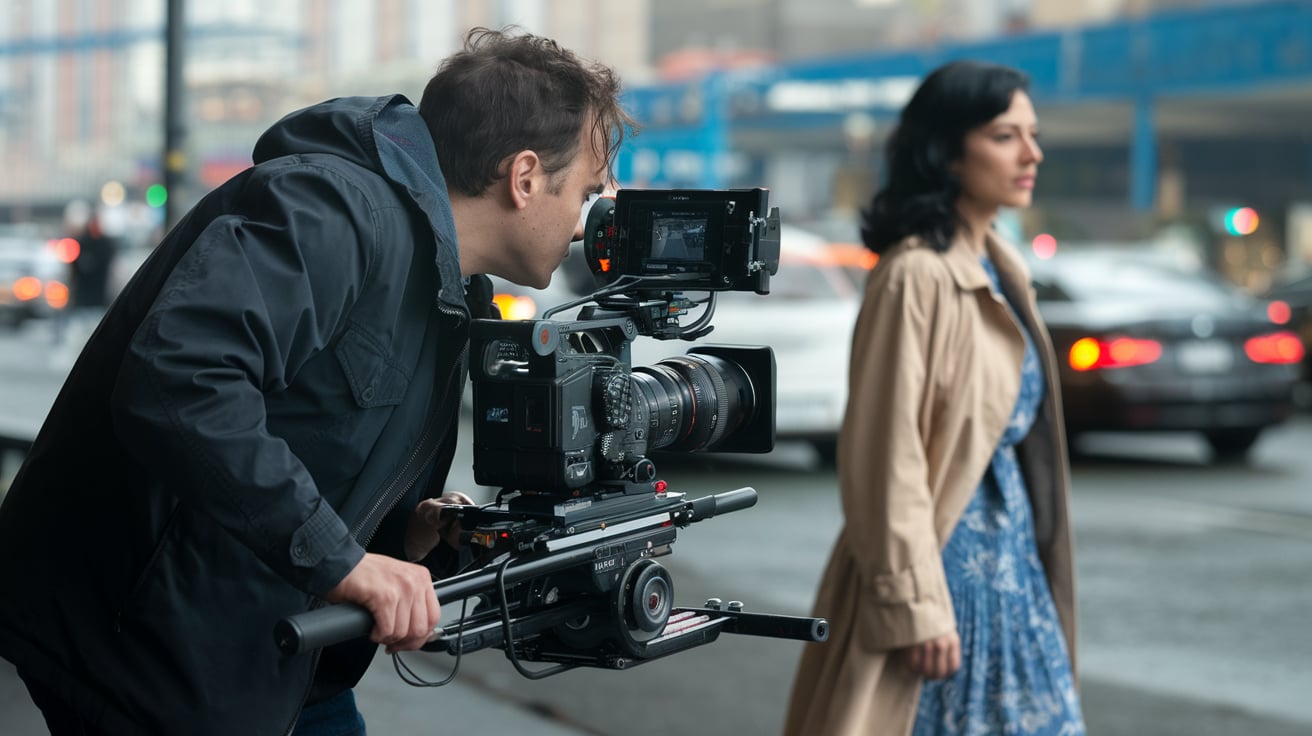Beyond Words: The Power of Documentary Music in Telling Stories
The Power of Music in Documentaries
In the world of documentaries, music is a vital component that can make or break the emotional impact of a film. Documentary music is defined as any musical composition or sound design element used to support the narrative of a non-fiction film. Unlike fiction films where music is primarily used to set the tone or mood, documentary music plays a crucial role in enhancing the storytelling and conveying messages that words alone cannot express.
Historically, documentary films did not always rely on music as heavily as they do today. In fact, early documentaries often had no soundtrack at all.
It wasn’t until the 1930s when sound technology became more advanced and filmmakers began experimenting with incorporating music into their documentaries. Initially, the use of music was limited and often only played during opening and closing credits or as transition pieces between scenes.
However, with time, documentary filmmakers started to recognize the power of using carefully selected music to create an emotional connection with their audience. One notable early example was Dziga Vertov’s 1929 film “Man With A Movie Camera,” which featured an original score by Russian composer Alexander Mossolov.
The score used unconventional instruments like an airplane propeller and cash register bells to create a unique soundscape that complemented Vertov’s experimental visual style. As documentary filmmaking continued to evolve throughout the mid-20th century, so too did its use of music.
Filmmakers began incorporating licensed popular songs into their films to enhance certain scenes or themes – such as The Rolling Stones’ “Gimme Shelter” in “Gimme Shelter” (1970) – while others relied on original scores created specifically for their films by established composers like Philip Glass (“Koyaanisqatsi”) and Ennio Morricone (“The Battle Of Algiers”). Today’s documentaries continue this tradition but also incorporate sound design elements like ambient noise and foley effects to create a more immersive experience for the viewer.
The Role of Music in Documentaries
In documentaries, music plays a unique and complex role beyond simply serving as background noise. It can be used to evoke emotions, set the mood, or even challenge preconceptions about the subject matter being presented. One of the most significant benefits of using music in documentaries is its ability to enhance storytelling by creating an emotional connection between the viewer and what’s happening onscreen.
One way that filmmakers use music is to underscore specific themes or ideas within their films. For example, director Michael Moore used the “Battle Hymn Of The Republic” throughout his film “Fahrenheit 9/11” (2004) as a way to connect the various threads that make up his scathing critique of American foreign policy in the wake of 9/11.
Similarly, in “The Act Of Killing” (2012), director Joshua Oppenheimer uses music from westerns and musicals as ironic counterpoints to scenes depicting real-life Indonesian death squad leaders reminiscing about their past atrocities. Music can also serve an educational purpose in documentaries by providing historical context through period-specific songs or cultural references.
For example, Ken Burns’ award-winning documentary series “Jazz” (2001) is full of original recordings from jazz greats like Louis Armstrong and Duke Ellington that help transport viewers back to a particular time and place.
Ultimately, whether filmmakers are using licensed popular songs or original scores created specifically for their films, they do so with one goal in mind: enhancing the overall impact of their storytelling. We wrote these articles about
SCIENCE AND TECHNOLOGY DOCUMENTARY SERIES.
Arts and Culture Documentary Series.
Documentary Videos Reading them would give you more information about documentaries.
Types of Documentary Music
When it comes to documentary filmmaking, there are three primary types of music utilized: original score compositions created specifically for the film; licensed popular songs; and sound design elements like ambient noise and foley work that add depth to the viewer’s experience. Each type serves a unique purpose in helping the filmmaker achieve their desired emotional impact and storytelling goals.
Original score compositions are created specifically for the film by professional composers and are meant to underscore and enhance the narrative of the documentary. These scores can be complex or minimal, depending on the filmmaker’s vision, and can feature everything from orchestral arrangements to experimental electronic sounds.
Composers work closely with directors to ensure that their music complements the visuals onscreen while also conveying specific emotions or ideas. Licensed popular songs, on the other hand, are pre-existing songs that filmmakers use to support certain scenes or themes within their films.
Unlike original scores, these songs are often recognizable hits from popular music – think Bob Dylan’s “The Times They Are A-Changin’” in “The Hurricane” (1999) – which adds a level of familiarity and nostalgia for viewers. Sound design elements like ambient noise and foley work play a vital role in creating an immersive experience for viewers.
These sounds help transport audiences into the world of the documentary by adding subtle yet powerful layers of depth that can help highlight particular aspects of a scene or create an overall mood.
No matter which type of music filmmakers choose to incorporate into their documentaries, it is clear that each plays a crucial role in enhancing storytelling, evoking emotions, and providing an unforgettable viewing experience for audiences around the world.
The Role of Music in Documentaries
Documentary films are a powerful medium for conveying stories, emotions, and messages. The right music can enhance the storytelling and create a deeper emotional connection with the audience.
Music has the ability to evoke an emotional response that can help convey the message of the documentary more effectively. It can also add depth and complexity to scenes, providing context, and subtext.
Music can be an essential element in documentaries by setting the tone for specific scenes. For example, if a documentary aims to capture tension or suspense during certain moments, it might use music that is both eerie and unsettling to make it more impactful.
One example of this technique is in Netflix’s series “Wild Wild Country,” where eerie string arrangements were used to heighten tension throughout the show’s climactic moments. Additionally, music is often used as a tool for building empathy with characters or people being interviewed in documentaries.
By using music that aligns with their emotions or experiences, audiences become more connected with these individuals on screen. This connection makes it easier for viewers to understand their stories better and feel invested in their journey.
Examples of documentaries that effectively use music to convey emotions and messages
The documentary “Amy” tells the heartbreaking story of Amy Winehouse’s life through her own words and unheard tracks from her personal archive. The film’s score includes several stripped-down versions of Winehouse’s songs as well as orchestral arrangements by Antonio Pinto that were composed specifically for this film.
The score brings Winehouse’s songs back into focus while also contextualizing them within her life story. Another notable example is “March of the Penguins” which documents penguins’ annual journey across Antarctica’s barren landscape.
Composer Emilie Simon created a beautiful soundtrack using electronic beats combined with orchestral vocals to capture both beauty and brutality in this harsh environment. Music plays an important role in documentaries.
It can enhance the emotional impact of a story, build empathy with characters, and provide depth and context to the scenes. When used effectively, music can become an integral part of a documentary’s storytelling tool-kit.
Types of Documentary Music
Original score: how composers create a musical narrative for documentaries
One of the most common types of documentary music is the original score, where a composer creates a musical narrative that complements and enhances the visual storytelling. The music is usually composed specifically for the documentary and serves as an integral part of the film’s structure. The composer’s job is to create music that aligns with the director’s vision, while also telling its own story.
In many cases, it is important for composers to immerse themselves in the subject matter before creating music for a documentary film. This may involve weeks or even months of research and conversations with experts in related fields.
This understanding allows them to create a score that not only evokes emotions but also informs viewers about content they might not be familiar with. A good example of effective original scoring in documentaries can be seen in Alex Gibney’s “Going Clear: Scientology & The Prison of Belief.” Composer Will Bates created an eerie and unsettling score that helps convey the sinister nature of Scientology as portrayed in the film.
Licensed music: using pre-existing songs to enhance mood or theme
Another type of documentary music is licensed songs, which are pre-existing tracks selected by filmmakers to help enhance mood or theme within certain scenes. Licensed songs can be useful when there is already an established association between certain songs and specific emotions or memories.
Sometimes, filmmakers will select iconic tracks that may not necessarily fit with what’s happening on-screen but add an extra layer to what’s being shown. A popular example can be seen in Martin Scorsese’s “Goodfellas,” where he uses classic pop tracks from artists like The Rolling Stones and Harry Nilsson to dramatize gangsters’ lives.
Sound design: using sound effects and ambient sounds to create immersive experiences
Sound design is another type of documentary music that enhances storytelling through the use of sound effects and ambient sounds. This type of music is particularly important in documentaries that focus on natural landscapes, wildlife, or other environments where sound plays a vital role in creating an immersive experience for the viewer.
Sound designers work to create a soundscape that puts viewers directly into the environment being presented on-screen. This can include recording ambient sounds on location or creating entirely new sounds to enhance what’s happening on-screen.
A great example of sound design in documentaries can be seen in “Planet Earth II,” where viewers are treated to an immersive and otherworldly experience through the show’s use of atmospheric sounds. Sound designer Kate Hopkins and her team recorded hundreds of hours of audio from around the world, which they then used to create a unique soundtrack for each episode.
The Process of Creating Documentary Music
Collaboration between Filmmakers and Composers/Songwriters
Music is an integral part of the filmmaking process, especially in documentaries where music serves to enhance the storytelling and emotional impact. The creation process for documentary music involves a collaboration between filmmakers and composers or songwriters.
The filmmaker provides the composer with the details about the film’s tone, message, and pacing, while the composer uses music to complement these elements. The collaboration between filmmakers and composers usually begins during pre-production.
Filmmakers will show early cuts of their documentary to composers or songwriters, who then create demo tracks based on their initial reactions to it. This allows both parties to establish a working relationship and begin exploring different musical ideas for specific scenes within the documentary.
During production, directors will work with composers or songwriters to create a musical narrative that supports the story being told on-screen. This includes identifying moments where music will be used as well as discussing how it should be used – whether it should add drama or supplement dialogue.
Challenges Faced During The Creation Process
Despite its importance in documentaries, creating effective documentary music poses several challenges for filmmakers and composers alike. One of these challenges revolves around balancing creative control between both parties during collaboration.
Filmmakers are often reluctant to hand over complete control of their films’ musical direction while also wanting input into what type of music should accompany certain scenes.
Moreover, timing is critical when composing documentary music as it must align seamlessly with various visual elements on screen such as dialogue or background noise. Therefore, creating effective documentary music requires meticulous planning beforehand regarding its placement in specific parts of films.
Budget constraints often pose a challenge during this process since hiring top-notch musicians can increase production costs significantly. Additionally, synchronizing soundtracks can also be expensive since it requires specialized software which can be pricey.
However, this challenge can be mitigated through innovative methods like using royalty-free music or collaborating with up-and-coming composers/songwriters who are looking for exposure. The creation process for documentary music involves collaboration between filmmakers and composers/songwriters to create music that complements the film’s tone, message and pacing.
Despite its importance, it poses several challenges including balancing creative control, timing and budget constraints. Nonetheless, overcoming these challenges is essential in creating effective documentary music that enhances the overall impact of documentaries on audiences.
Impact of Documentary Music on Society
Documentary music has the power to influence public opinion and raise awareness about social issues. It is an effective tool that can be used to convey emotions and messages through the use of music. The right kind of music can evoke strong emotions in viewers, leading them to feel more connected with the content of the documentary.
This emotional connection between audiences and documentary subjects can help to encourage greater engagement with social issues. Documentary music can also be used as a tool for education.
By using music to teach about historical events or issues facing society, documentaries can help spread knowledge and generate interest in these topics. For example, the acclaimed Netflix series “Making a Murderer” uses carefully chosen background music that not only enhances its narrative but also educates viewers on important legal issues.
How documentary music can influence public opinion and awareness on social issues
The use of documentary music has been shown to have a powerful effect on public opinion regarding social issues. In many cases, documentaries have helped shape public perception of a particular issue or event by presenting facts, opinions, and emotions in a relatable way. An example is Michael Moore’s “Bowling for Columbine”, which explores gun violence in America.
The film uses hauntingly beautiful instrumental pieces alongside footage from the Columbine massacre to create an emotionally charged experience for viewers. The film was successful in its mission to raise awareness about gun violence in America.
Examples of documentaries that have brought about change through their use of music
The power of documentary film lies in its ability to move viewers emotionally, particularly when it comes to raising awareness around societal issues. There are several examples where documentary filmmakers have effectively used original scores or licensed tracks to bring attention towards underreported topics or advocate for important causes. One such example is the documentary “Blackfish”, which highlighted the cruel treatment of orca whales in captivity.
The film’s use of evocative music helped to draw attention to the mistreatment of these animals and subsequently triggered a public outcry against SeaWorld, leading to significant changes in animal welfare policies. Another example is “An Inconvenient Truth”, which brought climate change to public attention.
The documentary used original music composed by Michael Brook and other musicians that complemented Al Gore’s narration about global warming, ultimately helping to inform viewers about this urgent environmental issue. The impact of documentary music on society cannot be overstated.
Documentaries have been used as an effective tool for raising awareness and creating social change through their use of music. Whether it is through original scores, licensed tracks, or sound design, documentary filmmakers have a powerful tool at their disposal that can move audiences emotionally and inspire them towards positive action.
Conclusion
Summary of Key Points Discussed in the Paper
Throughout this paper, we have explored the world of documentary music and how it enhances the storytelling experience. We began by defining what documentary music is and how it has evolved over time.
We then discussed the role that music plays in documentaries, highlighting examples of films that effectively use music to convey emotions and messages. Next, we explored the different types of documentary music, including original score, licensed music, and sound design.
We also delved into the process of creating documentary music and the challenges faced during this process. We looked at the impact that documentary music has on society and how it can influence public opinion on social issues.
Final Thoughts on the Importance and Significance of Documentary Music
Documentary music is an essential part of any great documentary film. It has the power to enhance emotions, convey messages, and create an immersive experience for viewers.
Music can heighten a scene’s drama or evoke deep emotions in a viewer that mere images cannot do alone. Moreover, through its use in documentaries with important themes such as climate change or human rights’ violations, it can encourage people to take action on important issues facing our world.
Therefore composers should put extra effort into their work when creating scores for documentaries with a cause. Documentary filmmaking would not be complete without effective use of musical scores or other sonic elements like sound designs – they are both indispensable tools for filmmakers who seek to tell compelling stories about real-world events creatively.

I am a highly experienced film and media person who has a great deal to offer to like-minded individuals. Currently working on several exciting projects, I am a film and media practitioner for over a decade. I have achieved a great deal of success in my professional career.







